Sweet Corn Cheesecake Sous Vide
with Cornmeal Crumble, Corn Caramel and Blueberry Salsa
Courtesy of Season 1 MasterChef Winner Whitney Miller
Serves 4
INGREDIENTS
For the cheesecake
- 1/4 cup (60 ml) heavy cream
- 1/2 cup (80 g) fresh sweet corn kernels
- 1 large whole egg
- 1/3 cup (63 g) granulated sugar
- 1 (8 ounce/228 g) package cream cheese, softened
- 1/4 cup (60ml) sour cream
- 1/2 tablespoon (7.5 ml) all-purpose flour
- 1/8 teaspoon (1.25 ml) orange zest
For the crumble
- 1/4 cup (45 g) fine ground cornmeal
- 2 tablespoons (30ml) granulated sugar
- pinch sea salt
- pinch powdered ginger
- 1-1/2 tablespoons (21 g) cold unsalted butter, cubed
- 2 tablespoons (15 g) pine nuts
For the corn caramel
Yields: about ¾ cup
- 1/2 cup (120 ml) heavy cream
- 1/3 cup (53 g) fresh sweet corn kernels
- 1/2 cup (96 g) granulated sugar
- 3 tablespoons (43 g) unsalted butter, cubed
For the blueberry salsa
- 1 cup (148 g) fresh blueberries or frozen blueberries, thawed
- 2 teaspoons (10 ml) orange juice
- 1 teaspoon (5 ml) white balsamic vinegar
- 2 basil leaves, julienned
INSTRUCTIONS
For the cheesecake
- Fill and preheat SousVide Supreme to 170F.
- In a small saucepan, combine the cream and corn; cover and cook over medium heat, stirring occasionally, for 5 minutes. Reduce heat to low and cook for 15 minutes more.
- Strain through a mesh strainer over a small bowl.
- Using a hand held electric mixer, beat the egg in a separate mixing bowl until light and pale yellow.
- Incorporate the sugar into the beaten egg.
- Beat the cream cheese and sour cream into the egg mixture until smooth.
- Lastly, beat in the corn cream, flour, and orange zest until well combined.
- Transfer the cream cheese mixture into a small (quart/0.9 liter) zip-closure cooking pouch; use the Archimedes Principle to evacuate as much air as possible and zip the seal.
- Submerge the pouch in the water oven and cook for 2 hours. When cooking is complete, quick chill the pouch, submerged in an ice water bath for 15 minutes, and refrigerate, flat, for at least 1 hour.
For the crumble topping
- Preheat the traditional oven to 350F.
- In a small bowl, mix the cornmeal, sugar, salt, and ginger together.
- Using two forks or a pastry cutter, cut the butter into the cornmeal mixture until the mixture resembles wet sand.
- Stir in the pine nuts.
- Pour the crumble mixture onto a baking sheet and bake for 10-12 minutes, stirring the mixture halfway through the baking time. Remove and set aside.
For the caramel sauce
- In a small saucepan, combine the cream and corn. Cover and cook over medium heat for 5 minutes, stirring occasionally.
- Reduce heat to low and cook for 15 minutes.
- Remove from heat and strain through a mesh strainer over a medium bowl.
- In a heavy bottom 2 quart saucepan, sprinkle the sugar over the bottom of the pan and cook for about 6 minutes, stirring occasionally. Once sugar begins to melt, stir vigorously with a wooden spoon.
- When sugar has dissolved, turn the heat to low and immediately add the butter, stirring until melted.
- Remove from heat and stir in the corn milk until combined.
For the blueberry salsa
- In a small bowl, stir the blueberries, orange juice, balsamic, and basil leaves together.
- Cover and refrigerate until ready to use.
To finish and serve
- Remove the cheesecake pouch from the refrigerator and carefully cut away the top of the pouch.
- Using a sharp knife, dipped in warm water, slice the cheesecake into four long rectangles.
- Carefully transfer the individual pieces of cheesecake to dessert plates using an offset spatula (dipped in warm water and patted dry).
- Top each serving with the cornmeal crumble and a mound of the blueberry salsa.
- Drizzle a spoonful of corn caramel onto each plate beside the cheesecake. (Save the rest, tightly covered in the refrigerator, for use for a week or two.)

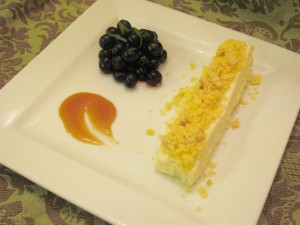
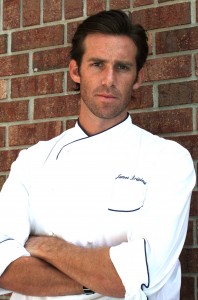
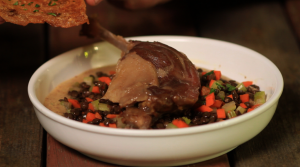 INGREDIENTS
INGREDIENTS

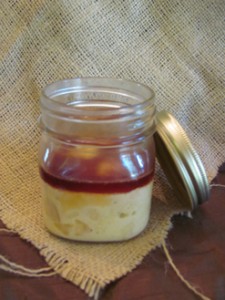



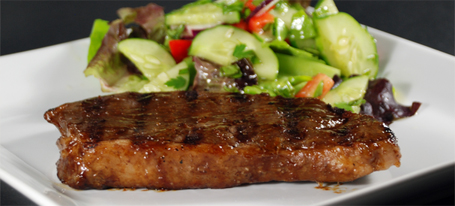

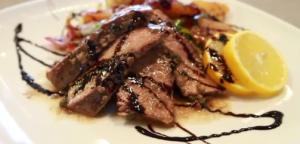
 Courtesy of Master Chef star, Sharone Hakman (
Courtesy of Master Chef star, Sharone Hakman (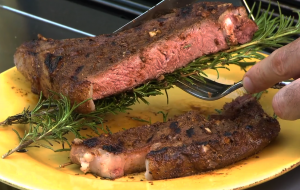
 Easy Returns & Exchanges
Easy Returns & Exchanges Shipping Rates & Info
Shipping Rates & Info Satisfaction Guarantee
Satisfaction Guarantee Contact Us
Contact Us Email your questions to
Email your questions to 
